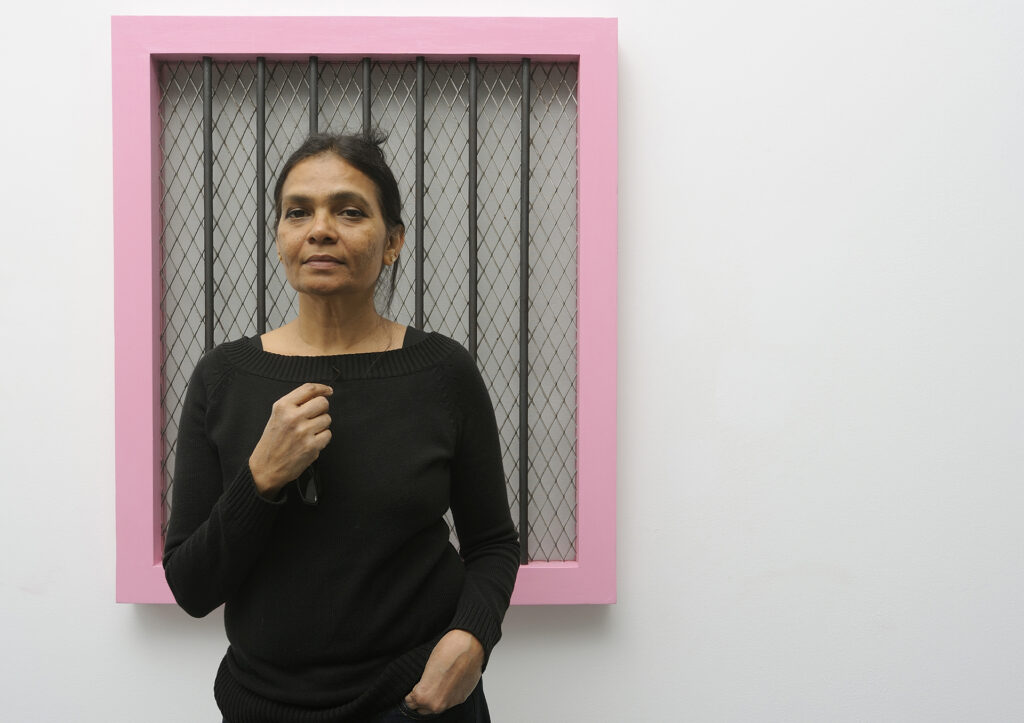I find it impossible to look at anything around me without thinking about the processes behind it
– Sheela Gowda
Who is Sheela Gowda?
Sheela Gowda is a contemporary artist living and working in Bangalore. Born in 1957, Gowda studied painting at Ken School of Art, Bangalore, India (1979) pursued a postgraduate diploma at Visva-Bharati University, Santiniketan, India (1982), and an MA in painting from the Royal College of Art in London in 1986. She was a finalist for the Hugo Boss Award in 2014 and the recipient of the 2019 Maria Lassnig Prize.
Sheela Gowda Artist Style
A recipient of numerous awards, these accolades do not justify her explorations with three-dimensional art. Beginning her career with figurative oil paintings, Sheela Gowda soon realised its limitations as a medium in the 1990s when the nation was going through immense economic, political, and cultural changes. She says in one of her interviews, “I was unable to find the means within painting to translate certain strong reactions to immediate issues.” This led her to shift to producing large-scale installation art in which she makes use of everyday materials. The idea of ‘process’ and ‘labour’ in making art is central to her works given her acute engagement with the local traditions of craft and the everyday labour experiences of marginalized communities.

Gowda’s choice of materials hinges upon their everydayness and cultural associations, for example, she makes use of cow dung, red ‘Kumkum’ (vermillion), incense and human hair. She also works with architectural and found materials, wood, metal, and stone. For instance, the choice of cow dung – which is a common element of life in India – in the 90s was a political gesture given the rise of Hindu nationalism that instigated sectarian violence mobilising often the figure of the cow. She used the material to create provoking paintings and sculptures.
Sheela Gowda Artworks
The ritualistic dimensions of everyday materials interest Sheela Gowda artist and allow her to interrogate several socio-political concerns.
Sheela Gowda Behold
One of her installations titled ‘Behold’ (2009) makes use of four kilometres of hand-knotted rope and approximately twenty car bumpers. The bumpers are suspended against the gallery wall, individually or in sets, from ropes made of braided human hair, which are knotted around the metal. The ropes extend irregularly between the hanging bumpers in small and large loops, as well as being gathered on the floor in piles and heaps, some of which can also be suspended from the ceiling.
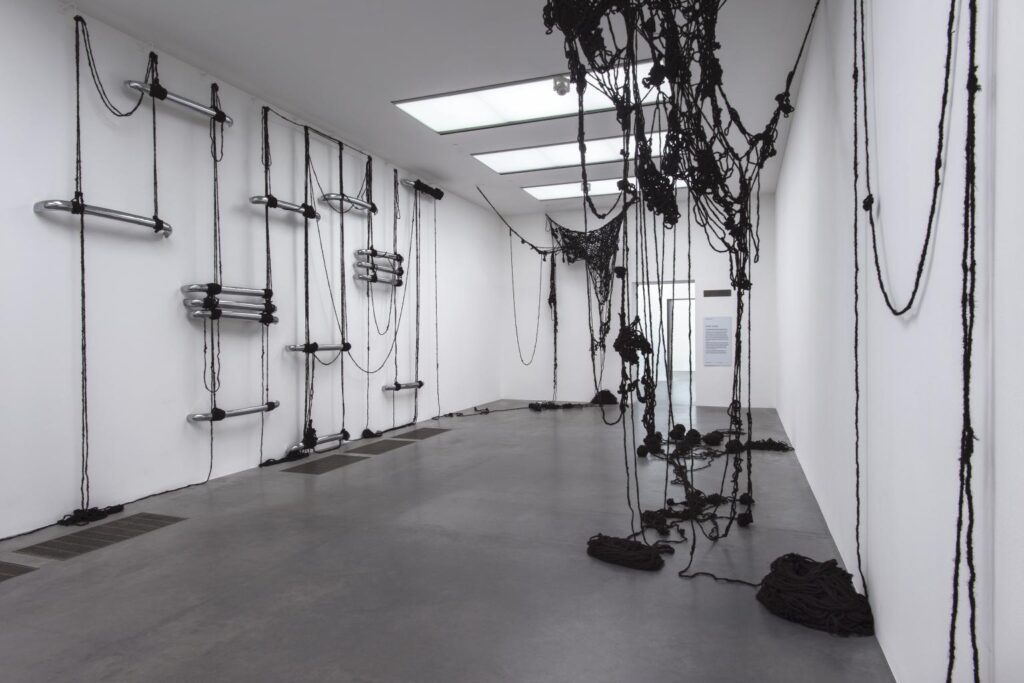
In Karnataka, where Sheela Gowda lives, short strands of human hair are commonly knotted around the bumpers of vehicles to ward off accidents and bad luck. The juxtaposition of hair and steel, says Gowda, “is a coming together of fear, superstition, belief and a need for comforting action in the framework of modern life.” Alongside fear and superstition, the work is also pointing to the emerging economic systems in India which witnessed a massive increase in the popularity and accessibility of vehicles. Similarly, the hairs, which are ritually shorn off as a marker of humility and sacrifice when pilgrims go to temples, have an industry of their own producing wigs and hairpieces.
Sheela Gowda And Tell Him of My Pain
From domestic labour to public works, Sheela Gowda artist reflects on internal contradictions: home can be both secure and oppressive, tradition can be inspirational and restraining, and industriousness can be innovative and destructive. ‘And Tell Him of My Pain’ (1998) comprises a group of red cords dangling and winding their way around an empty room. These cords are made up of many threads, coated and bound together with red vermilion powder, used to symbolically mark the foreheads of married Hindu women. Every thread has been passed through a needle which clusters at the end of the coiled ropes. The work invokes sinister bodily references, looping vessels and internal organs, but also the forms of labour by women that are increasingly marginalised and undervalued in present-day India.
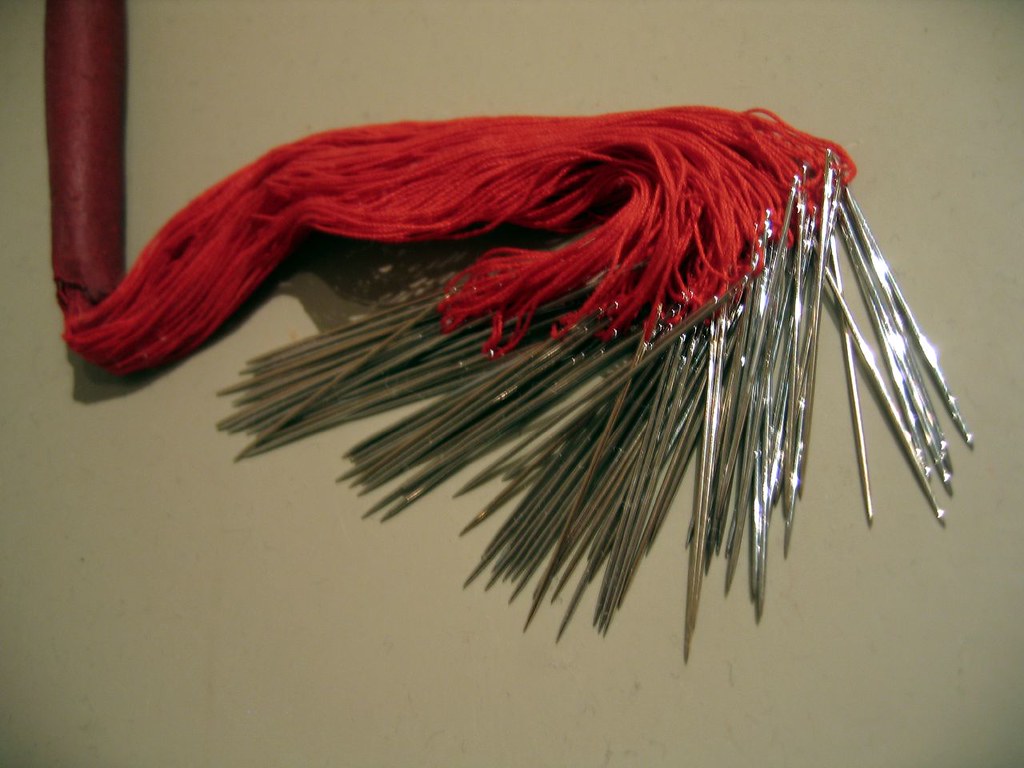
Sheela Gowda Darkroom
In 2006, Sheela Gowda made ‘Darkroom’ out of rusted tar drums from her hometown. These were assembled into a two-metre tall hut which the audience could enter. The structure suggested the informal architecture of slums, but once inside was transformed. Gowda pierced the structure with holes to let in light, recreating the effect of a night sky. The humble materials of the piece reflect the economic deprivation in developing countries, yet their transformation into a starry nightscape reminds us of the universality of hope and aspiration.
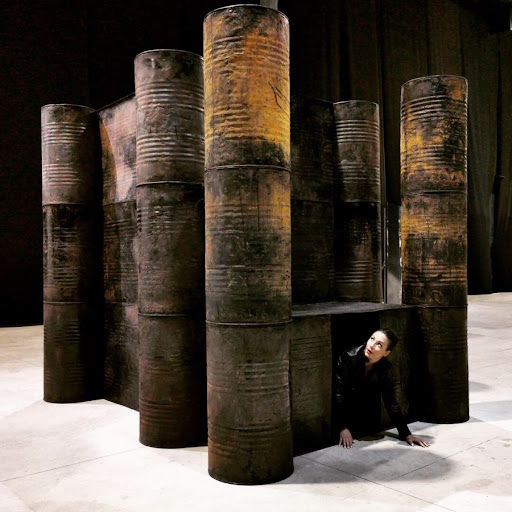
Through her ingenious use of everyday materials, Gowda’s artworks remind us of the deeper meanings embedded in ordinary life. Her shift from painting to installation art points to the necessity of understanding the limits of what any artistic medium has to offer.
Image Courtesy – STIRworld
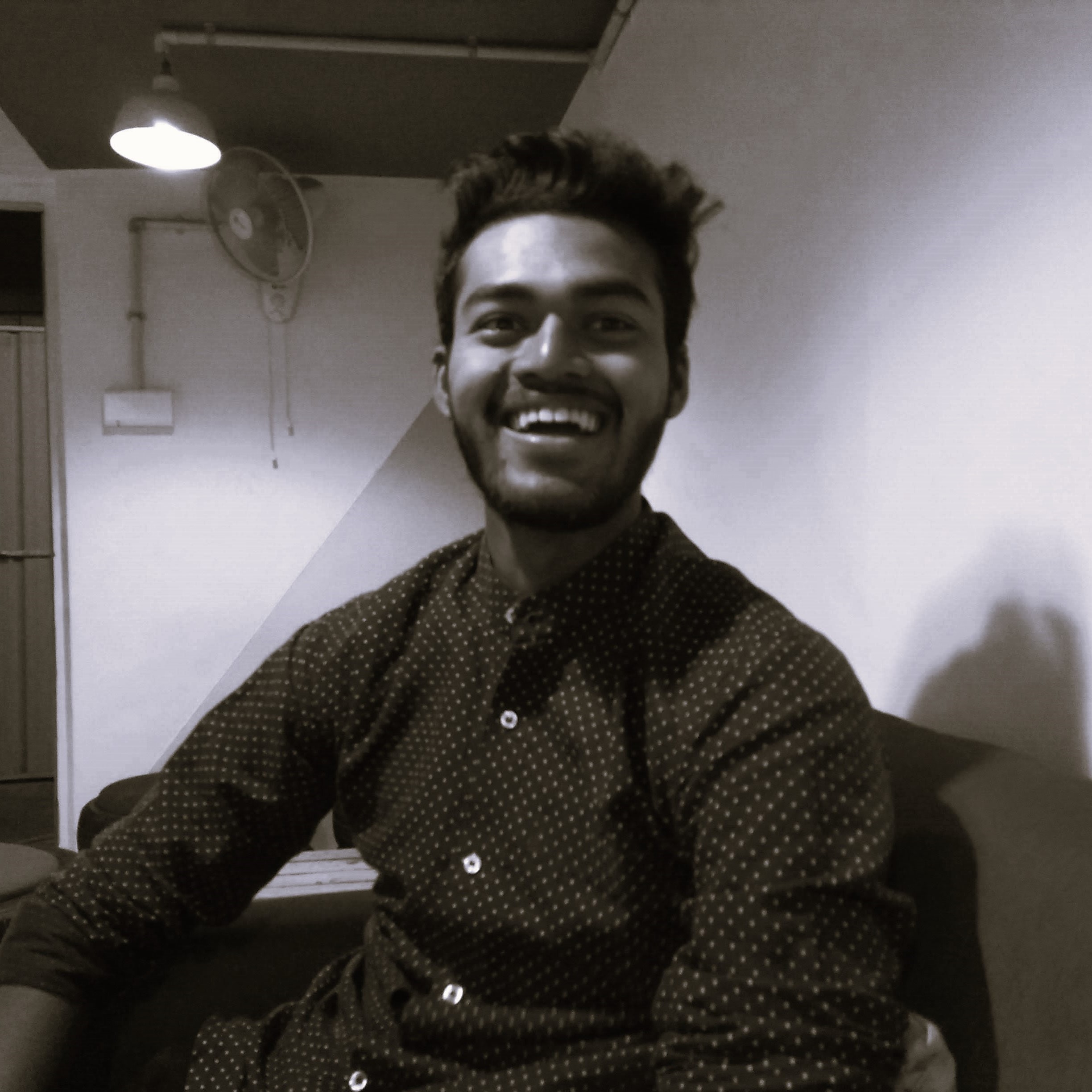
Contributor


